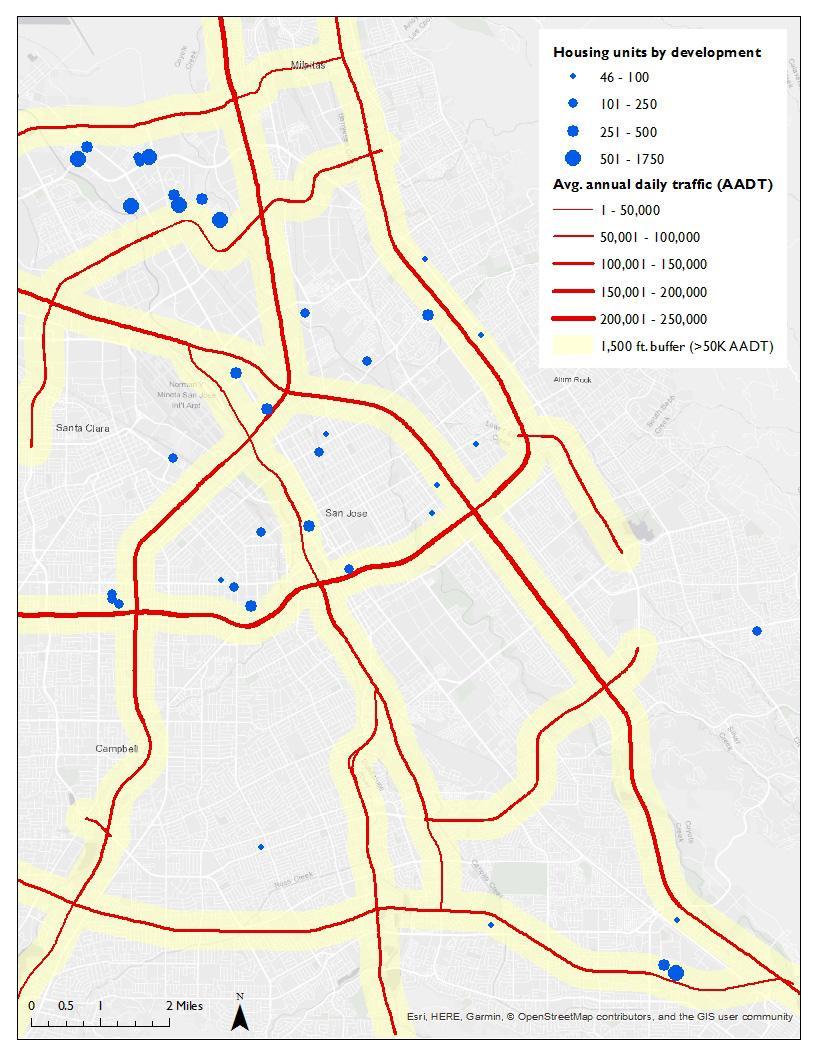New research: Roads, housing, and pollution

Gabbe's new paper in Sustainable Cities and Society examines the way the City of Los Angeles regulates residential development near freeways and other high-traffic roads and looks at recent zoning changes near roadways to understand why they occurred.
He found that residential development is permitted on most near-roadway parcels, including more than 92% of those within 500 feet of a freeway. One of the main explanations was that Los Angeles’s hierarchical zoning structure allows housing development in most commercial zones. Many of these parcels are in commercial development now, but they could be redeveloped for residential uses in the future.
Gabbe's work also noted that a larger fraction of near-roadway parcels had had their zoning changed to allow higher residential densities, compared with parcels farther away from roads, but this difference was explained by other locational factors.
Here in Silicon Valley, Gabbe and student researchers Efren Oxlaj Tambito '19 and James Wang '19 assessed the likelihood of new residential development being located near high-traffic roadways, and whether actions were taken to mitigate the health effects of air pollution. Of San José’s 39 largest residential developments approved between 2006 and 2016, about 3% of new housing units were within 500 feet of a high-traffic roadway, and more than 40% of new units were within 1,500 feet of such roads. They also found that mitigation measures, such as building sound walls and vegetative barriers, and installing high-efficiency air filtration systems, were implemented in a limited way by both public and private sector actors.
Gabbe presented the work co-authored with Tambito and Wang this fall at the Association of Collegiate Schools of Planning meeting in Buffalo, NY, and the co-authors presented it at the American Public Health Association conference in San Diego, CA.
Oct 29, 2018